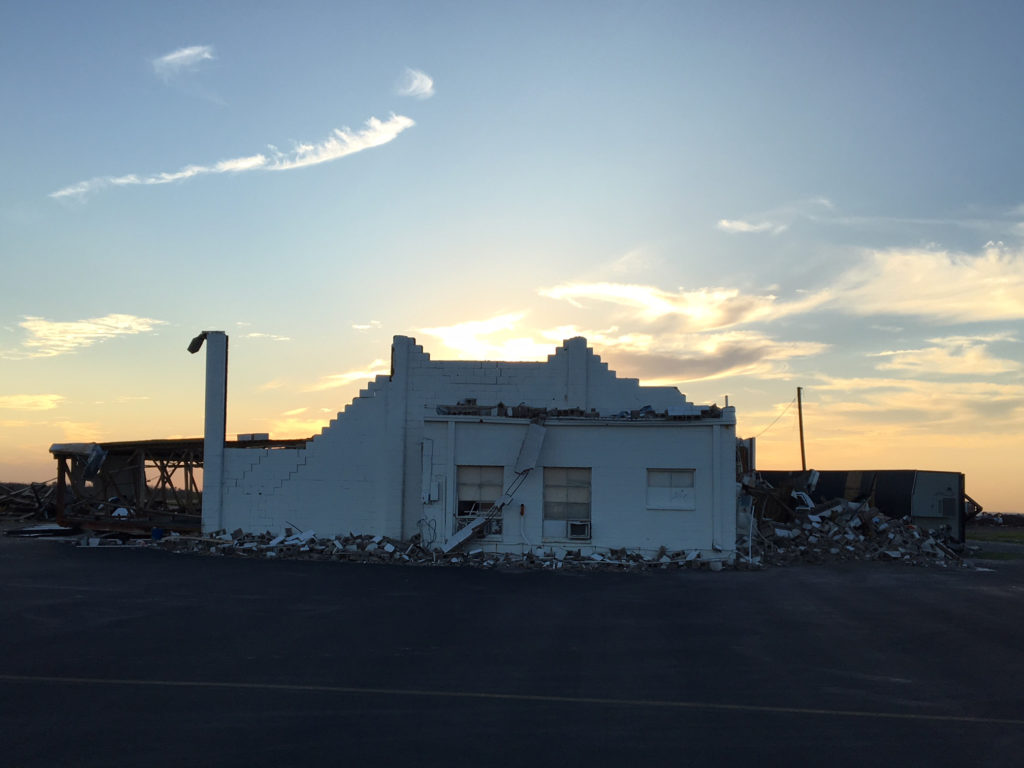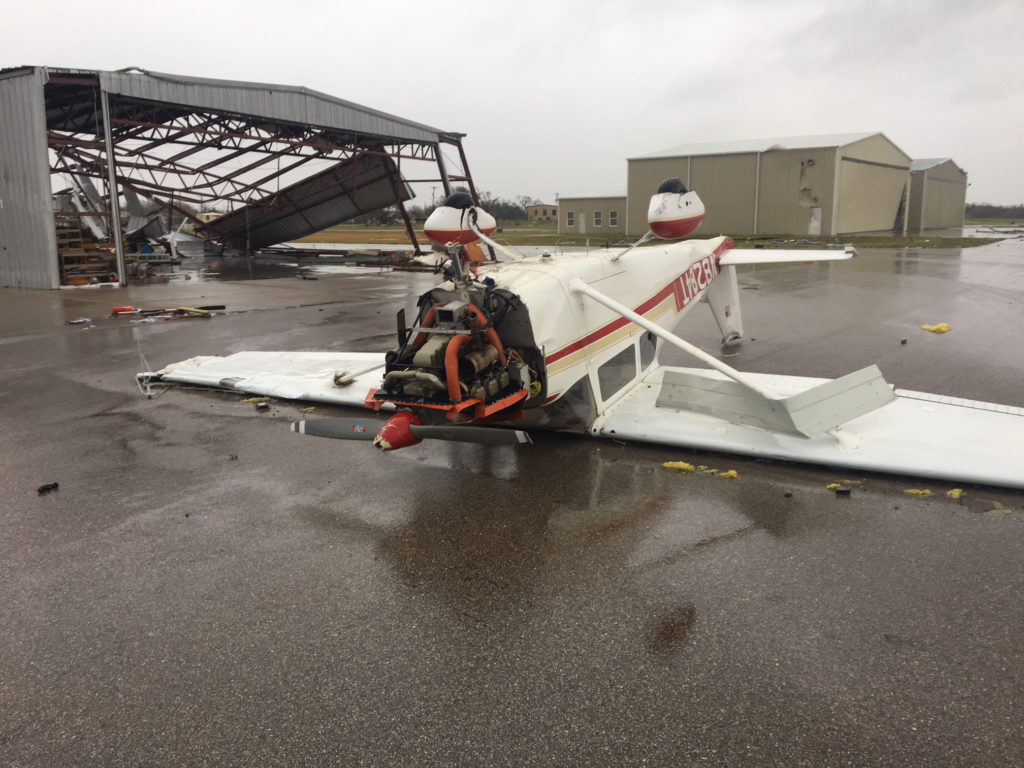By Chris Sasser
Texas A&M Transportation Institute

(Left to Right) Matthew Heinze, Colton Chaney, Mike Greer, Michael Caddell, Michael Salmela, Tyler Suanders
In the days following Hurricane Harvey, Texans from across the state stepped up to assist their neighbors on the coast. The Texas Department of Transportation (TxDOT) Austin District’s Special Crews unit was part of the first responder team to arrive in Rockport following the devastating storm.
“Typically on emergency response, we’re the first ones they call as we have experience with heavy equipment and have flexibility with our availability,” explained crew supervisor Matthew Heinze. “We can gather our team together and leave at a moment’s notice.”
The team was tasked with going to San Antonio on Aug. 24, 2017, and staging there prior to landfall. Friday afternoon, Heinze received notification that the crew would be involved in a Department of Public Safety (DPS) Incident Reentry Assessment Team (IRAT), which was a first for TxDOT.
“The DPS leads this team under the Governor’s direction, and it’s the first team that goes in when the hurricane arrives,” explains Heinze. “It consists of DPS, Texas Task Force 1, public utility officials from other cities, and an ambulance strike force team. The reason we were brought in was that in the event of road obstructions, we could clear the road with our equipment. We also had nearly 30 charter buses for civilian evacuation.”
The next morning, the crew joined forces with the DPS team, forming a nearly mile-long convoy down to Rockport. Once there, the TxDOT crew cleared city streets, even opening a road so that a cell phone tower could be restored.
On the second day in Rockport, the TxDOT crew learned of the extensive damage at the airport and that airport staff needed help to get the airport reopened.
“When we got there, what we saw was total devastation,” said Heinze. “The terminal was fine, but there were hangars down, doors were blown off, and planes were scattered everywhere. The old World War II cinder block hangar was leveled. We made contact with (airport manager) Mike Geer, and he gave us a punch list. We told Mike everything he needed to be done we could do, but I did ask a favor. And that was if our team could stay in the terminal. Of course, he agreed and gave us the pilot’s lounge with a kitchen area. It was perfect, and we stayed there four days.”
For these four days, Heinze and his crew assisted Geer and his staff by sweeping runways, recovering the fuel truck, which was trapped in a collapsed hangar, removing storm windows, and basically helping out with whatever needed to be done.
One story included the sweeping of runways with what Heinze referred to as the “procurement” of a TxDOT sweeper. According to Geer, they needed a sweeper, so Heinze left and then showed up with one. The team used the borrowed sweeper to clear the runway, and planes could land again.
“We were even pressed into RAMP services as well,” laughed Heinze. “We are all aviation nuts, so however we could help out there, we were more than happy to.”
“I couldn’t have asked for better team players,” said Geer. “Once he (Heinze) saw the concern on my face that we needed this airport back open, he did whatever we needed.”





